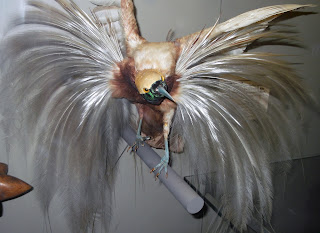One of the skills I feel I have developed throughout the course is my ability to collect a range of different images from a variety of sources. The research I have gathered for this project has came from different on-line website, including WGSN, library books and magazines such as Show Details. I have also collected primary source research by taking photos of taxidermy at the Hancock Museum and their archive. I feel that my initial drawings, development and final collection of prints will benefit from a strong and inspiring starting point. A successful result in the final major product could form the basis of a portfolio, with the 10 professional samples and final garment fronts.
Here are some of the most interesting research I have came across.
Amanda's Autopsies
www.amandasautopsies.com
Amanda creates her work with an influence from Walter Potter who was one of the first to dress up preserved animals. After his work went on sale to private collectors, Amanda recreated some of his work as it would probably never be seen by the public again. She now creates taxidermy, jewellery and steam punk themed items. I particularly like this clockwork chick as it shows a playful side to a gory theme. I could include the clockwork mechanism in my print to hint at the taxidermy theme but not look too gruesome overall.
Spirit Collection Tours
The spirit collection tours was an exhibition held at the Natural History Museum displaying different specimens pickled in jars of spirits.
I like the blue tag labelled '1492' as it helps to identify the specimen. Imagery of these tags, labels and numbering could be used in a conversational print with imagery such as birds, feathers, bell jars and mounts. This would avoid the final patterns from looking like a generic bird print and help indicate the theme of Taxidermy.
Hancock Museum Archive
The archive is available to the public through appointment. It holds all kind of taxidermy, bugs, insects, skeletons and weapons from around the world. It is an ideal place to gather primary research of things that would otherwise be unavailable. The visit here was mostly what had inspired me to choose the taxidermy theme and specifically taxidermied birds.



















